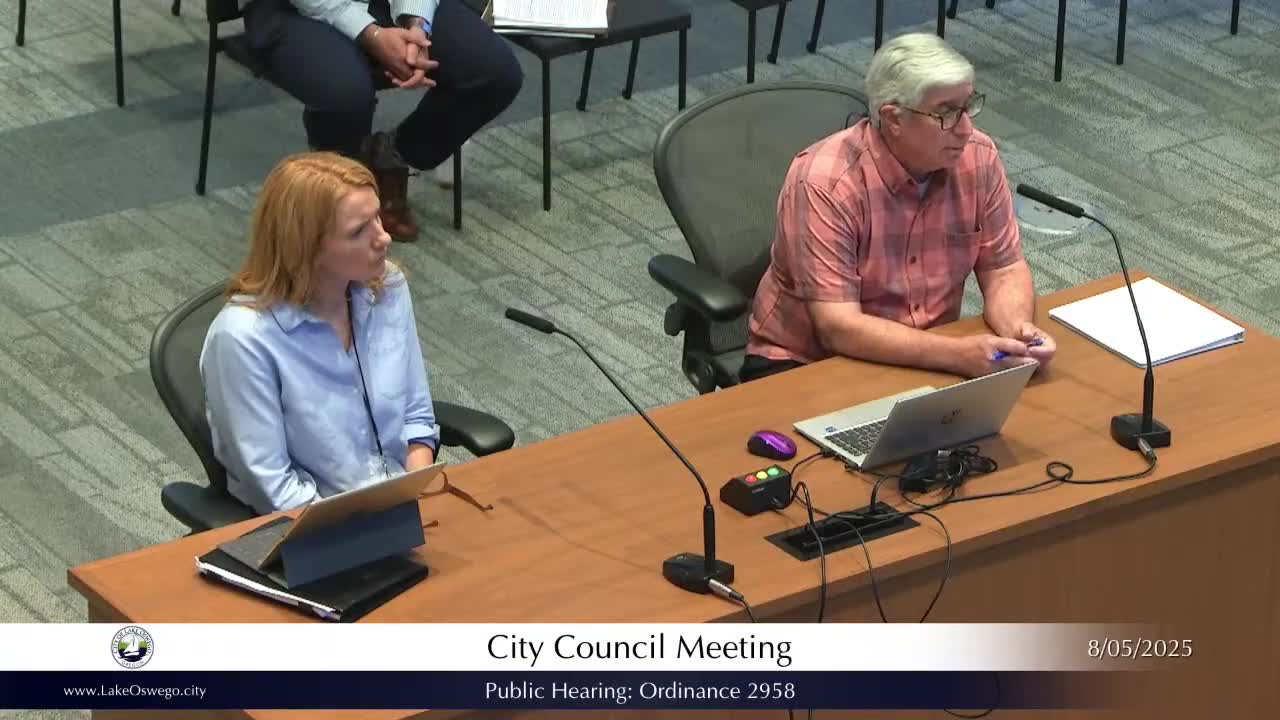Lake Oswego Considers Enhanced Tree Mitigation Requirements for Non-Residents
August 06, 2025 | Lake Oswego City, Clackamas County, Oregon
This article was created by AI summarizing key points discussed. AI makes mistakes, so for full details and context, please refer to the video of the full meeting. Please report any errors so we can fix them. Report an error »

During the recent City Council meeting in Lake Oswego, significant discussions centered around tree removal regulations and mitigation requirements. The council reviewed the existing policies that dictate how trees can be removed and the necessary compensatory measures that must follow.
A key point of discussion was the mitigation ratio for tree removal. Typically, the city requires a 1-to-1 mitigation ratio, meaning for every tree removed, one must be planted in its place. However, the council also addressed enhanced mitigation requirements, which escalate to a 3-to-1 ratio for certain cases, particularly when applicants do not meet the criteria for a Type 2 tree removal application.
This conversation highlighted the importance of maintaining the city’s green spaces while balancing development needs. The council noted that residents of Lake Oswego would likely have a smoother application process for tree removal, adhering to the standard 1-to-1 requirement, compared to non-residents who may face stricter regulations.
The implications of these discussions are significant for both residents and developers in Lake Oswego. As the city continues to grow, the council's commitment to preserving its tree canopy while managing development pressures will be crucial in shaping the community's environmental landscape.
Looking ahead, the council may need to revisit these regulations to ensure they effectively balance ecological preservation with the needs of the community. The ongoing dialogue around tree removal and mitigation will likely remain a focal point in future meetings as the city navigates its growth and environmental stewardship.
A key point of discussion was the mitigation ratio for tree removal. Typically, the city requires a 1-to-1 mitigation ratio, meaning for every tree removed, one must be planted in its place. However, the council also addressed enhanced mitigation requirements, which escalate to a 3-to-1 ratio for certain cases, particularly when applicants do not meet the criteria for a Type 2 tree removal application.
This conversation highlighted the importance of maintaining the city’s green spaces while balancing development needs. The council noted that residents of Lake Oswego would likely have a smoother application process for tree removal, adhering to the standard 1-to-1 requirement, compared to non-residents who may face stricter regulations.
The implications of these discussions are significant for both residents and developers in Lake Oswego. As the city continues to grow, the council's commitment to preserving its tree canopy while managing development pressures will be crucial in shaping the community's environmental landscape.
Looking ahead, the council may need to revisit these regulations to ensure they effectively balance ecological preservation with the needs of the community. The ongoing dialogue around tree removal and mitigation will likely remain a focal point in future meetings as the city navigates its growth and environmental stewardship.
View full meeting
This article is based on a recent meeting—watch the full video and explore the complete transcript for deeper insights into the discussion.
View full meeting
